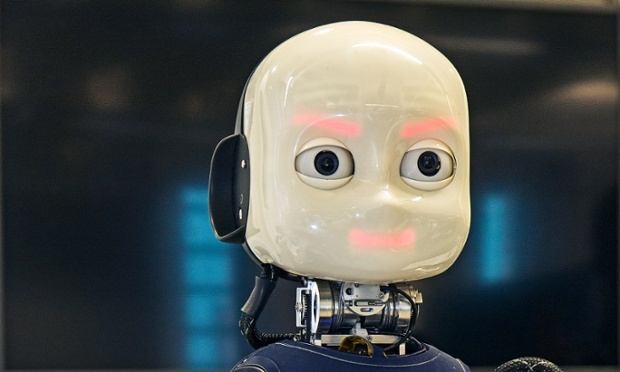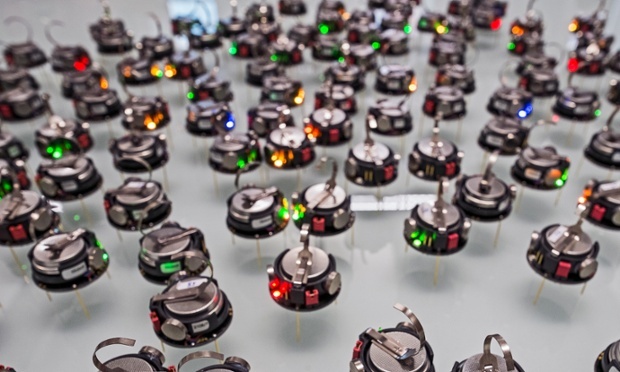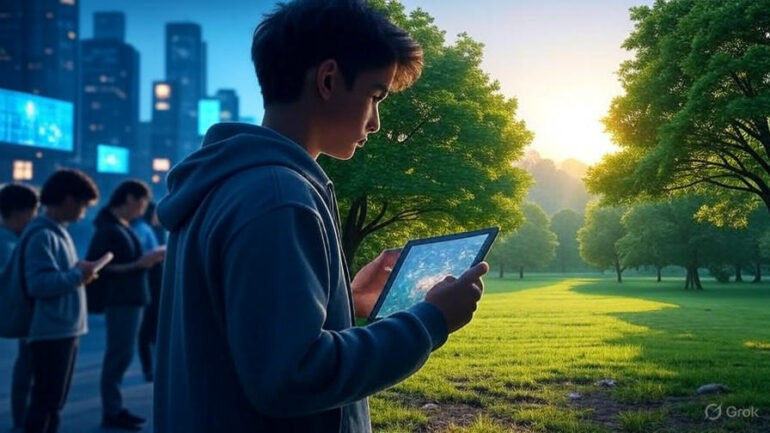So good... like you
Listeners:
Top listeners:
00:00
00:00
chevron_left
-
play_arrow
NGradio So good... like you
The iCubs are coming! How robots could teach our kids and do our dirty work

They dance, play, swear and beg you to touch them. They may even let you snog someone on the other side of the planet. Meet the robots of tomorrow.
A bedside table on wheels is practising three-point turns around the room, rising up and down and cheekily cocking its head as it glides, while a furry white creature emits plaintive mews from the room next door, flapping its flippers for attention. Nearby, hundreds of wiry insects buzz about on a glass tray like angry cockroaches awaiting their lunch, while a team of drones whirs to life in the corner. You have to watch your step in the basement lab of Sheffield Robotics, where even the furniture has a mind of its own.
“We were wondering what would be an appropriate way for a table to talk to you,” says Tony Prescott, the centre’s director and a professor of cognitive neuroscience at the University of Sheffield, as the balletic bedside table comes to a halt, like an obedient dog called to heel. “But it might actually be better if it didn’t talk and just got on with its job. Maybe your table doesn’t need to have a personality.”
Such existential questions have occupied Prescott and his researchers for the past four years, while working on everything from assistive robots, geared to helping the elderly, to whole swarms of them for search-and-rescue missions. But what really drives Prescott, whose background is in psychology, is the ultimate quest: to build a robot with a sense of its own self.
He introduces me to iCub, a toddler-size humanoid with a streamlined plastic head from which two huge doe-eyes emerge, complete with seductively drooping eyelids. Little red lights then blink behind its mute white mask, displaying a downturned mouth and a severe frown. It appears I may have angered the robo-baby. Was it something I said to the table? “That’s his working face,” says Prescott. “He’s still in the early stages of learning. He’ll smile when he achieves a task or gets something right.”
Sheffield is one of a small group of European universities testing out the possibilities of this £250,000 robot, developed by the Italian Institute of Technology as an open-source vehicle for investigating human cognition and artificial intelligence. It is one of the most advanced humanoids of its kind, with 53 degrees of movements in its limbs, a sense of touch and hand-eye coordination, allowing it to grasp objects, play catch and .
When I reach out to touch it, a monitor shows exactly where and how hard my fingers are pressing. When its voice is switched on, it gets a bit creepy. “I like when you touch me in this way,” he says, in a matter-of-fact monotone. “Please, caress me again.” And he’s a bit sweary, as three-year-olds go. When he misses the ball in a game of Pong, he cries: “Bloody hell! That isn’t fair!”
Sheffield’s iCub is run by a system modelled on the cognitive architecture of the human brain, so it can “think” and learn from the world around it, as a toddler would. Over the past couple of years, the team has been developing iCub’s object-recognition skills and its sense of its body, all the time building up a kind of autobiographical memory to start creating its sense of “self”.
“The next stage is giving him understanding, consolidating his experiences for future prediction,” says Prescott. “But we probably don’t want to let him evolve his own motivation and drives. That’s a bit of a risk.”
The grave results of giving robots free will has been shown all too well in countless sci-fi films – from the sinister plotting of 2001: A Space Odyssey’s cyclopean HAL, to the freedom-seeking Ava in Ex Machina, the sentient machines rarely fail to ensure that their creators come to a sticky end. But it’s not only Hollywood that’s worried about AI.
Stephen Hawking, at once enrapt and alarmed by the power of his latest speech-synthesis system, has declared that the development of full artificial intelligence “could spell the end of the human race”. He has been joined by the future-embracing inventor and serial entrepreneur Elon Musk, who thinks AI is “our biggest existential threat” describing further research into giving machines intelligence as “summoning the demon”. Is Sheffield’s lab, where boffins busy themselves with propellors and remote controls, really a front for a techno-Wicca cult that could spell the end of humanity?
“I think we project on to robots our fears about ourselves,” says Prescott. “Ultimately, the benefits hugely outweigh the risks, from using assistive robots to help our ageing population, to using them for repetitive menial tasks in agriculture and industry. They’ll be working alongside humans, combining our ability to think imaginatively with the computer’s capacity for memory, precision and speed.”
But is there a danger they might outperform us? Might the next generation of robo-workers find themselves in the sights of Ukip, coming to the UK and taking our jobs? “Yes, they’ll take some aspects of our jobs, but it will be the dirty and dangerous jobs, letting us focus on the things we are better at. And we’ll be wealthier, giving us the time to do what we want to do. They’ll also be going places we can’t, with teams of cooperative robots sent into hazardous environments too dangerous for people – whether on Mars or to a post-nuclear or earthquake disaster zone.”
The table of creatures buzzing behind us is a test for exactly this kind of application. The 900 “kilobots” are busy modelling the swarming behaviour of a colony of fire ants, with “lead entities” sending out infrared signals that the worker ants follow, shuffling around to form clusters in different parts of the table. They make up a “super-organism”, potentially capable of working together on anything from construction sites to disaster response and mining.
“The benefit is that they can teach each other and then work together autonomously,” says Roderich Gross, who leads the research here into such self-organising systems, watching as a team of larger robots gang together to shunt a big blue object across the room towards a red one. “That’s collective decision-making in action,” he says proudly, as if watching his own children push a toy across the lab floor.
The white furry thing is still mewing away in the corner, so I go over and give it a stroke. It writhes with joy and emits ecstatic squeaks. Another loving squeeze and the whole thing shudders with delight. Developed in Japan as a companion for the elderly and infirm, this is Paro, an avatar of a baby harp seal and the most easily gratified pet I’ve encountered. “If someone is distressed or has dementia, the repetitive behaviour helps to calm them down,” says Prescott. “And it helps people to socialise, giving them something to talk about.” The little seal is packed with sensors, receptive to touch, light, sound, temperature and orientation, making it seem a good deal more advanced than some dopey real-life pets – and without the added mess. It learns your behaviour, too: “It will adapt if you like rough play,” says Prescott, as I spin it upside down, to a slightly alarmed squeal.
Which brings us to a branch of robotic development unspoken of here, but which Prescott says is likely to be one of the key forces that drives the robotics industry, namely the X-rated world of “digital intimacy”. Last year at Sheffield’s Festival of the Mind, professor Adrian Cheok from City University London presented his “Kissinger” device, a set of pressure-sensitive artificial lips that can transmit a kiss from a real mouth to a similar device owned by a partner who might be thousands of miles away, ushering forth a world of people slurping into their phones. He is also working on a “chat agent”, I-Friend, capable of striking up sexually charged conversations, to be integrated into a future generation of sex robots and automated chat lines. Let’s just hope that intelligent bedside table doesn’t get too frisky.
Meet the robots at Fear of Missing Out, a talks event at the ICA, London, 29-31 May.
theguardian.com
Written by: New Generation Radio
Similar posts
ΔΗΜΟΦΙΛΗ ΑΡΘΡΑ
COPYRIGHT 2020. NGRADIO






















Post comments (0)